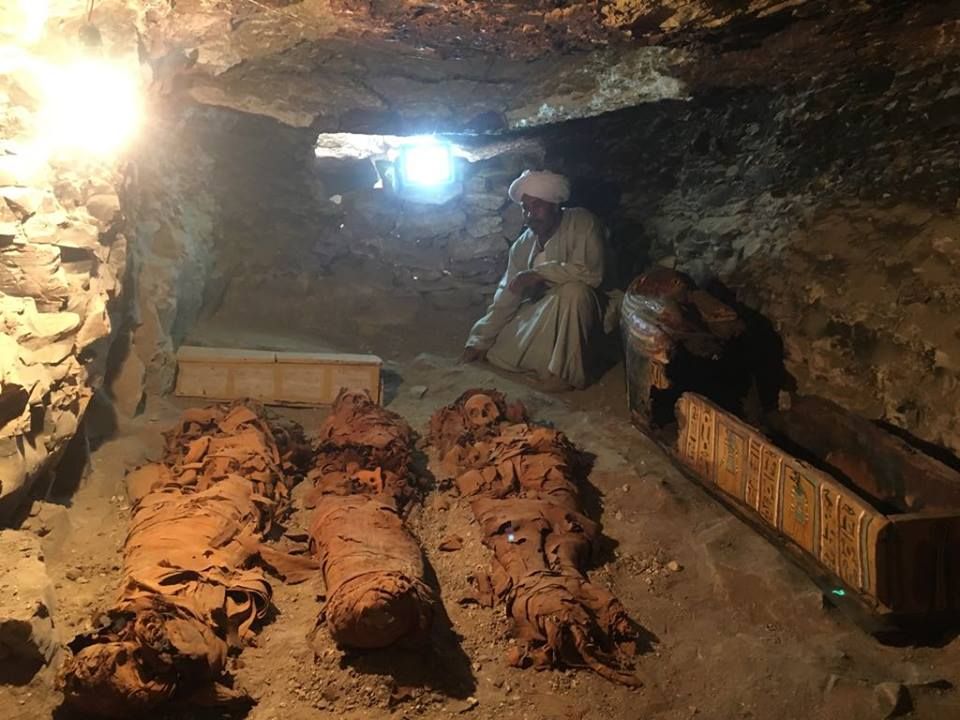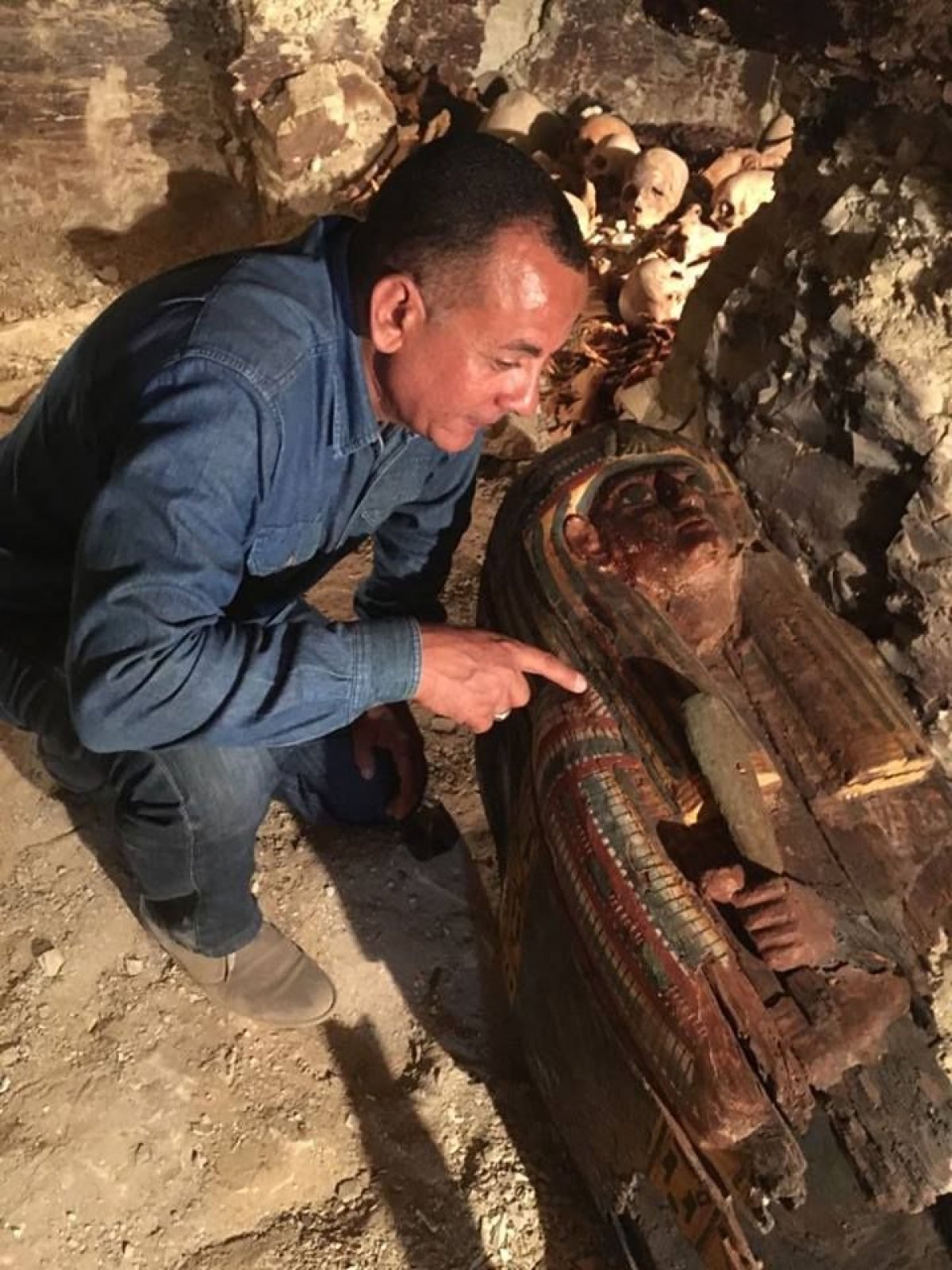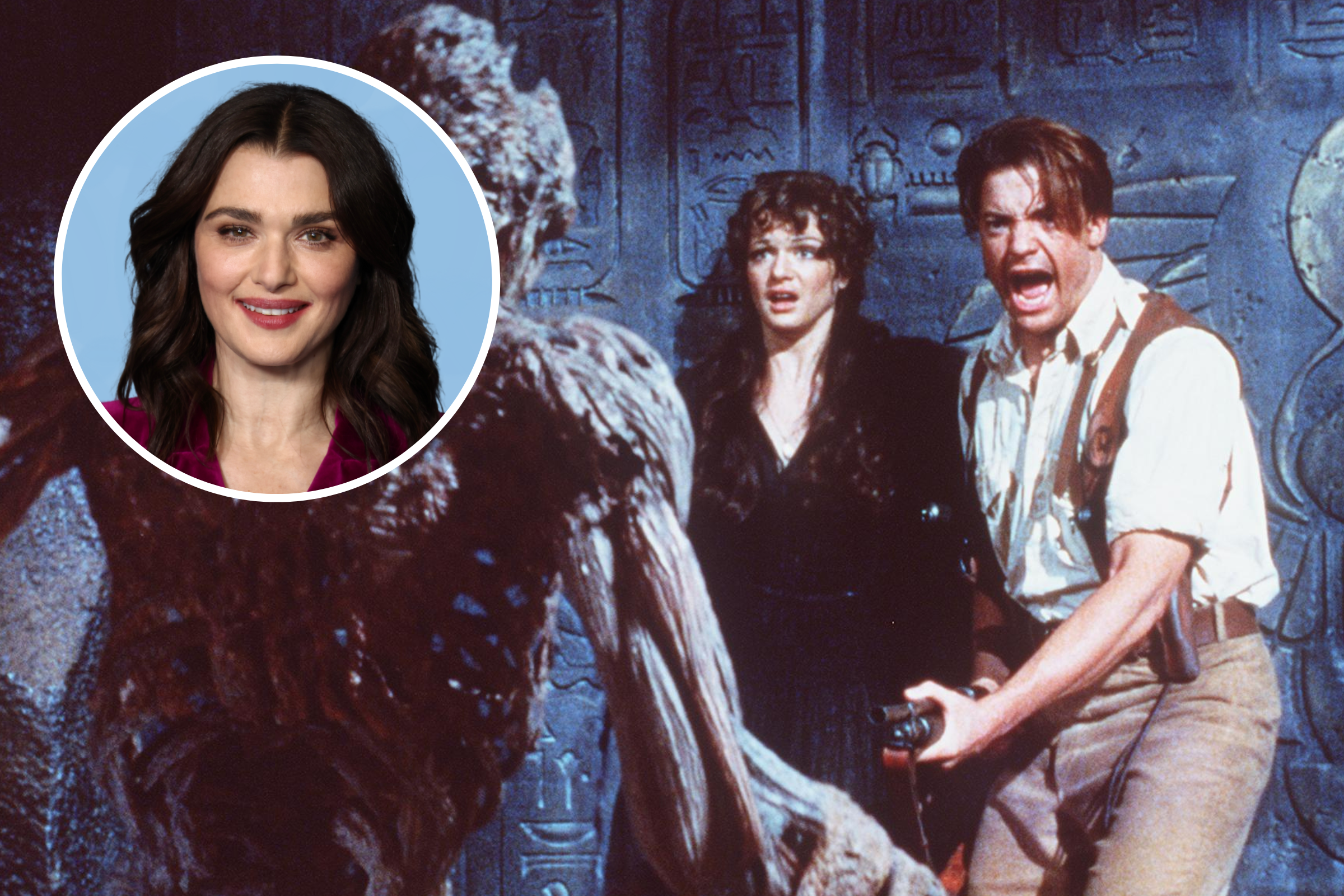
Archaeologists in Egypt have uncovered the ancient tomb of a royal goldsmith and jeweler containing mummies, believed to be his family members, and treasure more than three millennia old.
The haul of jewelry, statues and ancient sarcophagi, the traditional anthropomorphic coffins used in the time of the pharaohs, were found in the Luxor's Valley of the Kings. It appears to have belonged to a dignitary identified as Amenemhat.
The Egyptian Ministry of Antiquities said in a statement that, on the basis of discoveries made in the tomb, Amenemhat was a goldsmith who devoted his jewelry to the Egyptian god Amun. The ancient deity was one of the most powerful gods, referred to as the king of the gods, at the time of the royal jeweler's death between 1567 B.C. to 1320 B.C., during the 18th dynasty.
Found within the tomb were two startlingly well-preserved mummies, believed to be Amenemhat's wife and one of his adult sons. Dr. Mostafa Waziri, who led the excavations, explained how the bodies, including a third belonging to to a second son, were discovered within a tomb accessible down two burial shafts, located in the courtyard of an earlier middle kingdom burial tomb.
As well as the family's sarcophagi and funerary masks an adjoining chamber contained a collection of less well-preserved sarcophagi from the 21st and 22nd dynasties.
Excavators were able to identify the family members from a set of sandstone statues discovered at the entrance to the tomb. The first depicted Amenemhat sitting on a high-backed chair beside his wife who wears a long dress and a wig. Between their legs stands, in a smaller scale, a figure of one of their sons.
The quality of the bodies' preservation through the mummification process meant that the archaeologists were able to say that the female body was that of a woman aged around 50 at the time of her death. The number of abscesses around her jaw and bacterial residue on her bones meant it was likely she was suffering from a number of diseases when she died.

One of the two sons was most likely placed in his brother's tomb at a later date. His bare bones were left piled on top of his brother's mummy.
Among the discovered artifacts are limestone remains of an offering table, four wooden sarcophagi decorated with hieroglyphic texts and scenes of different ancient Egyptian deities, and a sandstone statue of a trader making offerings to King Tutmose III.
The discoveries in the Valley of the Kings follow the excavation of a set of later tombs in central Egypt. The stone tombs from the 27th dynasty and the Greco-Roman era contain a number of sarcophagi, as well as a collection of clay fragments.
Uncommon Knowledge
Newsweek is committed to challenging conventional wisdom and finding connections in the search for common ground.
Newsweek is committed to challenging conventional wisdom and finding connections in the search for common ground.
About the writer
Callum Paton is a staff writer at Newsweek specializing in North Africa and the Middle East. He has worked freelance ... Read more
To read how Newsweek uses AI as a newsroom tool, Click here.








